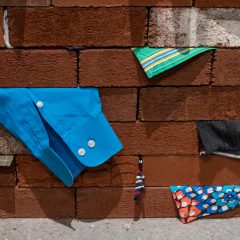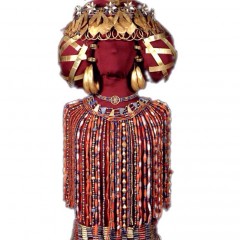Focusing on the Joe Sixpack of Mayadom, an exhibit of ancient Maya objects and painted images is opening tomorrow (Friday. April 3), at the University of Pennsylvania Museum of Archaeology and Anthropology.

Painted Metaphors includes two dozen pieces of ancient painted pottery that have recently been conserved by the museum. The pieces, discovered a century ago, are from Chama, a Maya village in the highlands of modern day Guatemala. Exhibition Curator Elin Danien proposes that the imagery on the pots tell a story of cultural and political conquest of Chama by the more sophisticated Maya lowland culture.
In the show of more than 150 artifacts, I was bowled over by a number of things.
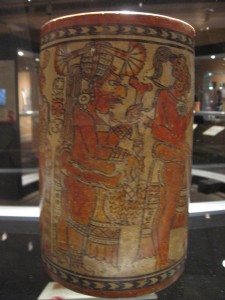
The 8th century paintings on the piece called The Chama Vase look contemporary illustrations of an event. This cylinder vase, which is the star of the show not just for me but for the curators, is the work of an artist whose deft fluidity of line and sharp, witty eye reveals individual facial and personality characteristics. There’s a slouchy shlub with a sullen air and wispy whiskers, for example; and behind him there’s a big guy who looks a little nervous. These details bring the past to life with their ordinary humanity.
The pots are displayed in a specially made semicircular pair of vitrines that allowed you to circulate around the pieces. And as usual, the labels at this museum are full of information worth reading.
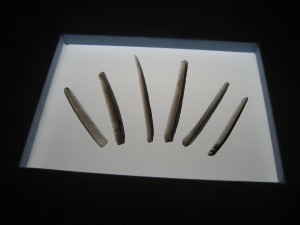
While I was noodling around the exhibit, Danien approached and asked if I had any questions. I was standing in front of a case of knives that she said were used for bloodletting–human blood as a sacrifice to the gods. I thought it over and asked how archaeologists knew that was the function of the knives. She answered that they found them in group tombs next to the pelvises of skeletons. That made total sense to me.
I reacted with horror although I know that contemporary young people sometimes cut themselves, also as some kind of bargain with the gods to make things better. I guess these things are hardwired into our brains. Danien reminded me of circumcision, pointing out it was a blood sacrifice to a god. In Tuesday’s post about William Pope.L‘s ET video at Haverford, which resident scholar John Muse described in some detail, I was struck by how Pope.L suggested the murder of Emmett Till was a kind of sacrifice to the gods by the white men who drowned him.
So I have to thank Danien, whose offer to help me understand something really did help me understand something.
Another factoid that pleased me no end was that some of the vessels contained a residue that suggested the pots contained chocolate at some point–and chocolate was a valuable in those days, used in trade and for rituals. Chama was a site where the cacao tree grew even in the 20th century, and the presence of cacao there suggests why Chama would have been a trading hub and a place the lowland Maya might invade. The Hershey Foods Corporation did the analysis!
Resources
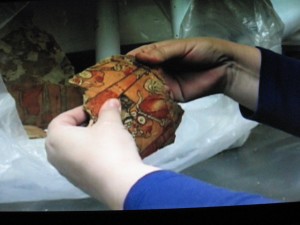
Also outstanding in this exhibit were some how-to videos. You can see Lynn A. Grant, Interim Head of Conservation at the museum, reconstructing the pottery. Another was of a modern-day woman using traditional Guatemalan weaving techniques. The videos are also on the web.
The museum is also selling a book telling about the discovery in 1910 of the polychrome pots and the revised conservation methods: The Maya Vase Conservation Project, by Lynn A. Grant, with contributions by Elin C. Danien.
The exhibit also has some interactive stuff for young and old kids (I’m the latter, of course). Everyone seemed to love the chance to play with the two 3-D jigsaw-like pottery puzzles for pretend reconstruction of pots.
The web site for the show is a winner, with lots of info, maps and pictures of the artifacts. The exhibit will remain up until Jan. 31, 2010, and although you can get a lot from the web site, there’s nothing like seeing the real objects.


